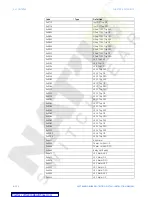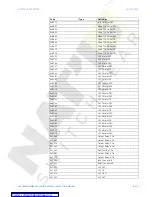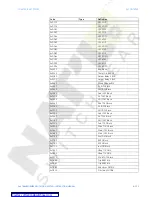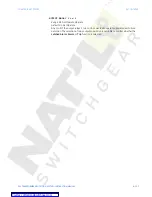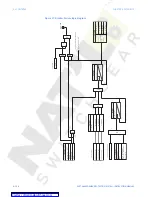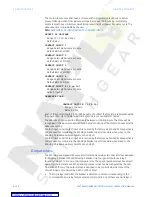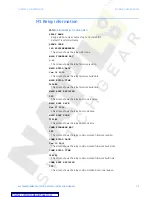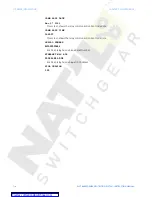
6–130
345 TRANSFORMER PROTECTION SYSTEM – INSTRUCTION MANUAL
S5 INPUTS/OUTPUTS
CHAPTER 6: SETPOINTS
The contact inputs are either open or closed with a programmable debounce time to
prevent false operation from induced voltage. Because of de-bouncing, momentary
contacts must have a minimum dwell time greater than half power frequency cycle. The
debounce time is adjustable by the user.
PATH
:
SETPOINTS > S5 INPUTS/OUTPUTS > CONTACT INPUTS
SELECT DC VOLTAGE
Range: 17 V, 33 V, 84 V, 166 V
Default: 84 V
CONTACT INPUT 1
Range: Select alpha-numeric name
Default: Bkr1 52a (CI#1)
CONTACT INPUT 2
Range: Select alpha-numeric name
Default: Bkr1 52b (CI#2)
CONTACT INPUT 3
Range: Select alpha-numeric name
Default: Bkr2 52a (CI#3)
CONTACT INPUT 4
Range: Select alpha-numeric name
Default: Bkr2 52b (CI#4)
CONTACT INPUT X [5 to 10]
Range: Select alpha-numeric name
Default: Input X
DEBOUNCE TIME
↘
CONTACT INPUT X [1 TO 10]
Range: 1 to 64 ms
Default: 2 ms
Each of the contact inputs 5 to 10, can be named to reflect the function it represents within
the application. Up to 18 alpha-numeric characters are available for names.
The debounce time is used to discriminate between oscillating inputs. The state will be
recognized if the input is maintained for a period consisting of the protection pass plus the
debounce setting.
Contact Input 1 and Contact Input 2 are named by the factory as 52a and 52b respectively
and are used for monitoring the Winding1 breaker open/close state when wired to the
Winding 1 breaker auxiliary contacts 52a and 52b.
Contact Input 3 and Contact Input 4 are named by the factory as 52a and 52b respectively
and are used for monitoring the Winding2 breaker open/close state when wired to the
Winding 2 breaker auxiliary contacts 52a and 52b.
Output relays
The 345 relay is equipped with seven electromechanical relays: two special relays designed
for Winding 1 Breaker trip and Winding 2 Breaker trip, four general purpose relays
(Auxiliary Relays 3 to 6), and a Critical Failure relay. The special purpose relays have fixed
operating characteristics and the general purpose relays can be configured by the user.
Operation of the two Trip output relays is designed to be controlled by the state of the
circuit breaker as monitored by a 52a or 52b contact.
•
The Trip relays reset after the breaker is detected in a state corresponding to the
command. When a relay feature sends a command to one of these special relays, it





